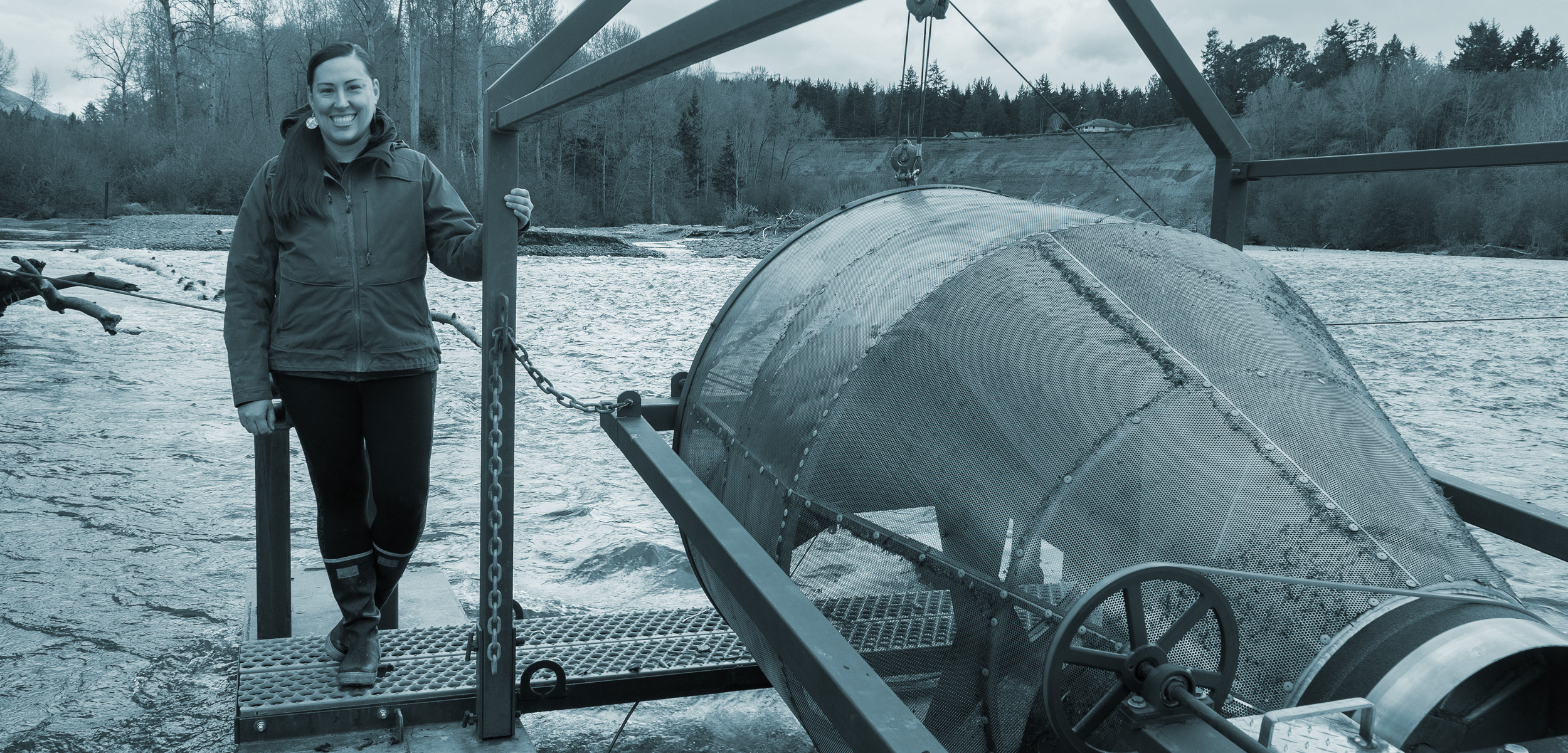Coastal Job: Tribal Fish and Wildlife Technician
Vanessa Castle keeps a close eye on the salmon and big cats that roam around her coastal home.
Article body copy
Some people work in cubicles, others work in kitchens, but the most intriguing workplace of all may be the coast. Meet the people who head to the ocean instead of the office in our Coastal Jobs series.
Vanessa Castle is a member of the Lower Elwha Klallam Tribe, based near Port Angeles, Washington, where she works as a fish and wildlife technician. She continues her tribe’s tradition of caring for the land by helping monitor the return of salmon on the Elwha River after the world’s largest dam removal project and investigating the population and predator-prey dynamics of big cats on the Olympic Peninsula.
My family members have always been salmon fishers. Even as a child, my mom would take me out gillnetting on the Elwha to exercise our treaty rights. My job was to clean fish. We had a fish camp right on the riverbank where we’d stay for weeks at a time, only coming home to shower.
That was when the Elwha and Glines Canyon Dams were still in place. They were taken down starting in 2011. Our fish camp is gone now—it was washed away by the river. I was a little sad to see it go. But our elders tell us that the river is living and breathing, changing with the seasons. It’s beautiful to see the river move freely. And now that I work for my tribe, I can see the fish coming back. I’ve been one of the first people to see spawning salmon in some areas where they hadn’t been in 100 years, and that’s an indescribable feeling.
When I was younger, I left to see the world. I ended up at Standing Rock on the border of South and North Dakota for over six months fighting to protect the water. I was even arrested and charged with a felony, which was thankfully dismissed. I came back with a profound sense that I needed to do the same work of protecting the water from exploitation here, with my tribe.
I was first hired to help the Lower Elwha Klallam Tribe’s fisheries department estimate the numbers of returning fish after the dam removals. While looking for fish, we have to walk upstream, so that we don’t muddy the water as we’re trying to see into it. I’ve also helped with a snorkel survey, free-floating down the river in a drysuit looking for fish in their nest, as well as spawned-out carcasses.
Our department is like a family. I wish more young Indigenous people knew that these are good jobs. When some of the fish projects I was working on ended, my bosses transitioned me to a new project looking at how coastal cougars affect deer and elk populations. So now I split my time.
I used to be afraid of cougars. As a hiker, I was taught that they’re a big danger, like they’re always watching you. But with this project, I get to watch them. Every six months, I help review files captured by a network of trail cameras to get a sense of the population size and of what individual animals are doing. I also go into the field to check on cougars when their GPS collars show that they’re hanging around one location a lot, such as after they kill prey.
My favorite part of the job is doing captures. We wait for snow. Then, it’s time. We—technicians and biologists—drive old logging roads until we cross cougar tracks. We have a team of specially trained hounds, and they find and tree the cougar. We have to be very careful that we drive the animal up a good tree, so it’s not hurt on the way down. It can’t be hanging over a cliff or a river, for example. We dart the animal and back off, letting it come down on its own. When it falls asleep, we collar it, and take samples for genetic analysis so that we can see how the cougars are all related.
The best part is making sure it wakes up okay—seeing a cougar staring back at you from 20 feet [six meters] away is something that can change your life.

